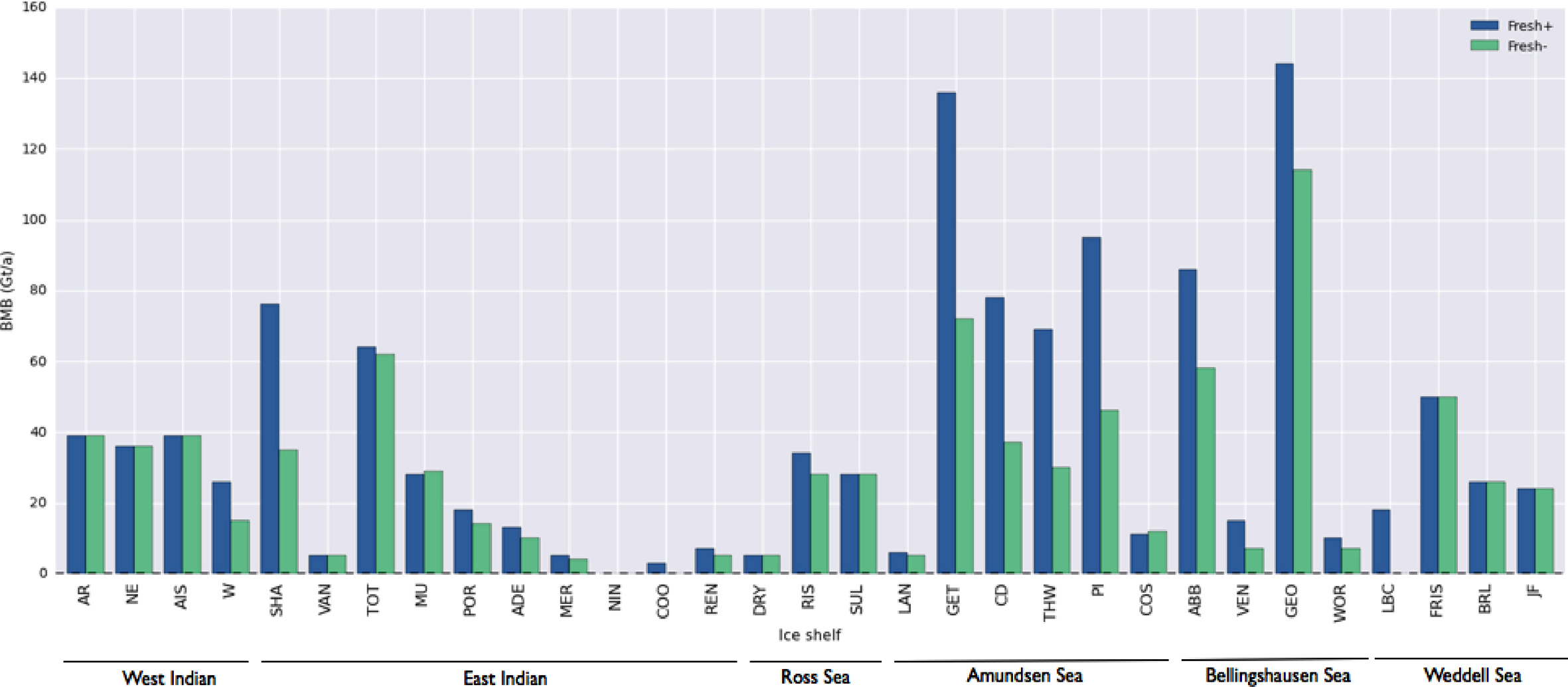Impact of increasing glacial freshwater release on the Antarctic sea ice
In their new paper, Merino et al. propose a refined methodology to calculate and distribute the increased freshwater release from the Antarctic ice sheet from the early 1990s to the 2000s. They describe the impact of increased glacial freshwater on regional sea ice extent and volume, and compare it to the wind-induced changes over the same period. Here is the journal link and the non-edited draft can be found here.
This study is based on global eddy-permitting NEMO ocean simulations, with Lagrangian icebergs as in Merino et al. (2016), and ice-shelf melt water distributed between the grounding line depth and the depth of the ice-shelf front as in Mathiot et al. (2017). The geographical distribution of iceberg calving and ice-shelf melt in the 2000s is from the satellite-based estimates of Depoorter et al. (2013). Iceberg and ice-shelf melt in the early 1990s are reconstructed for each ice shelf considering all the terms of the ice-shelf mass balance, and from the variations in ice-sheet mass balance derived from satellite data (Shepherd et al. (2012)).
 Basal Mass Balance (BMB) of the ice shelves in the 2000s (FRESH+, from Depoorter et al. 2013) and in the 1990s (FRESH-, reconstructed).
Basal Mass Balance (BMB) of the ice shelves in the 2000s (FRESH+, from Depoorter et al. 2013) and in the 1990s (FRESH-, reconstructed).
It is found that the freshwater-induced changes in sea-ice extent overall contribute 25% of the total (i.e. resulting from changing winds and freshwater) trend in sea ice extent. There are strong regional contrasts with, for example, freshwater accounting for 37% of the total decrease in sea ice extent in the Amundsen Sea sector, versus 52% in the West Pacific sector. Perturbations in freshwater forcing produce a much greater impact on sea-ice thickness, and therefore on sea-ice volume. For the entire Southern Ocean, the freshwater-induced changes in volume represent almost 50% of total changes. The freshwater-induced changes in sea ice volume overwhelm the atmosphere-induced changes in the Ross and West Pacific sectors. In the Amundsen sector, the increased release of freshwater from the ice shelves enhances coastal overturning (as previously shown in Jourdain et al. 2017). This leads to more heat supplied by the very warm ocean sub-surface to the ocean surface near the ice sheet margin.

Changes in sea ice thickness due to changing winds (a) and to changing glacial freshwater (b).
This study was partly funded by the TROIS AS ANR project, and the simulations were run on the occigen supercomputer at CINES.
Reference
Merino N., Jourdain, N. C., Le Sommer, J., Goose, H., Mathiot, P. and Durand, G. Impact of increasing Antarctic glacial freshwater release on regional sea-ice cover in the Southern Ocean. Ocean Modelling, in press doi:10.1016/j.ocemod.2017.11.009